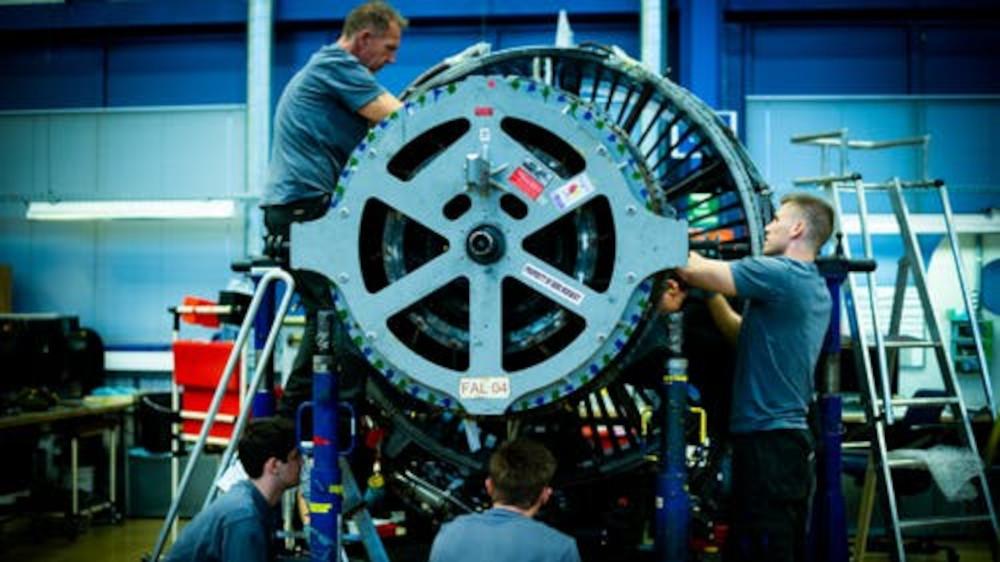
AMSTERDAM--A spike in narrowbody engine maintenance demand owing to factors such as recovering domestic markets has led MRO providers to adjust their MRO setups to accommodate higher work volumes.
In comparison to its widebody market counterpart, the narrowbody segment is expected to drive the recovery as customer demand increases at a faster rate. “You really see a split in what is happening between widebody and narrobody,” says Michael Grootenboer, senior VP engines product at Air France Industries KLM Engineering & Maintenance (AFI KLM E&M), speaking on an MRO Europe conference panel.
“In the widebody segment, there’s a much higher level of retirement of legacy aircraft. So that means that some of the activities are much more depressed because of the crisis than we had anticipated previously.”
Grootenboer singles out China and the U.S. recovering quickly, with Europe trailing along with other regions--making the recovery “mismatched.”
He says as a result, AFI KLM E&M has shifted capacity towards narrowbody engine types while also changing some services. “Airlines are still trying to preserve cash so there’s a shift in the type of work we are doing in the shops--moving away from full performance restorations to lighter workscopes to keep the fleet flying effectively,” he adds.
Andreas Kalina, VP marketing and sales Europe, Africa and Middle East at German engine specialist MTU Maintenance, says there is a positive indication that shops are getting more engine and component work while domestic markets are recovering in some regions. MTU shops are mostly full across the five locations, he says, with demand ranging from GE90 inductions to CF6 work.
In the narrowboy segment, he notices one specific demand trend. “There is a differentiation between more mature narrowbody engine types such as the CFM56 and new engine types such as the Leap, where there is higher demand because those are the equipment that are reactivated due to their lower fuel burn.”
The cargo market, among the few segments to show any sign of relative stability throughout the Covid-19 crisis, resulted in steady demand for certain widebody engines. “There is a PW4000 resurgence particularly from cargo operators,” says Caroline Vandedrinck, senior VP business development at SR Technics, who adds that maintenance work with cargo and VIP operators means it isn’t as dependent on the passenger market.
“If you go back one year ago, we had to flip over to the CFM56-3 engine as we saw quite a lot of demand from cargo and sold quite a few of those engines,” says Neil Russell, chief operating officer at independent engine specialist Aero Norway.
“Slowly as the year goes on, we’ve seen growing demand for CFM56-5 and CFM56-7 engines and now the type of shop visits are completely mixed: “there’s heavy engines, hospital visits, engines that we buy to sell, and modules getting swapped.”
With a penchant for less intensive lighter and hospital engine shop visits over the past 18 months, a question arose about when heavy shop visits will start returning to pre-Covid-19 levels.
Alan Kelly general manager at CFM Services, the maintenance business of the engine manufacturer CFM International, says this scenario is picking up slightly. “We’re starting to see some heavier shop visits in the network,” he says. “We’re not completely there yet, but we do see signs of engines coming in for core restoration and even full shop visits.”
CFM has maintained its aftermarket infrastructure during the crisis, but Kelly says it lost some people because of the downturn. “As we see the growing trend in shop visits and the increase in workscopes, our focus is on re-establishing the right level of workforce and training to ensure we can support these shop visits.”
Opinions vary on when heavy shop visits will increase in larger volumes. Guillaume Limouzy, regional sales director at StandardAero airlines and fleets, says he is still seeing engine operators looking to keep the asset on-wing for as long as possible to minimize expensive shop visits. “There is a way not to remove the engine--by managing with all the monitoring tools that can maintain the engine on-wing or even to get the work performed directly at the airline’s location.”





